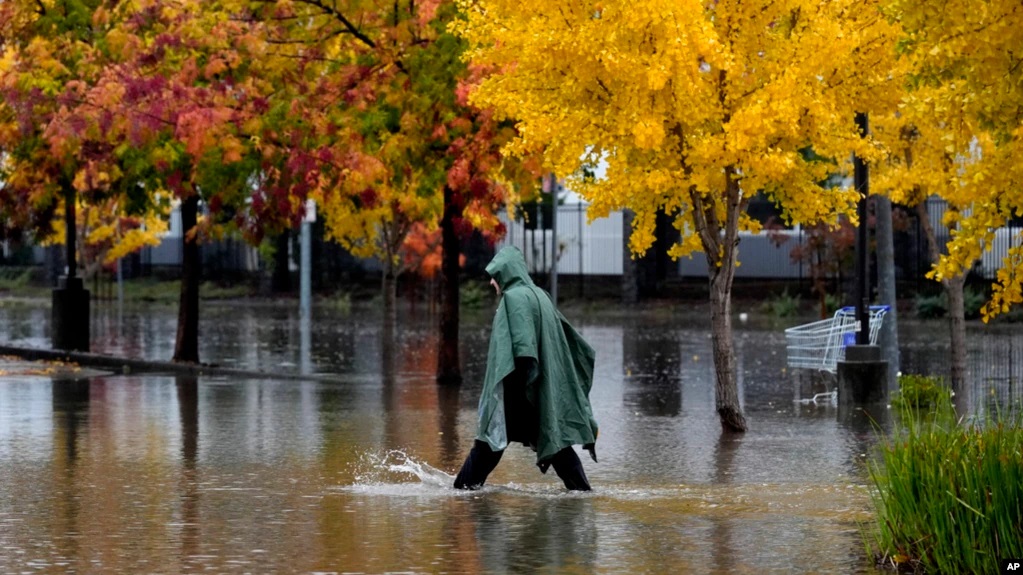Polar Bear Attack Kills Mother, Toddler in Alaska
Written by worldOneFm on January 18, 2023
ANCHORAGE, ALASKA — A polar bear chased several residents around a tiny, isolated Alaska Native whaling village, killing a mother and her 1-year-old son in an extremely rare attack before another community member shot and killed the bear, authorities said.
The fatal mauling happened Tuesday in Wales, an isolated Bering Strait coastal community on the western-most tip of the North American mainland — about 80 kilometers from Russia — that is no stranger to coexisting with polar bears.
Summer Myomick of Saint Michael and her son, Clyde Ongtowasruk, were killed in the attack, Alaska State Troopers said in a statement.
Like many far-flung Alaskan villages, the predominantly Inupiaq community of roughly 150 people organizes patrols when the bears are expected in town, from July through early November, before the sea ice forms and bears head out on the frozen landscape to hunt seals.
That makes what happened this week almost unheard of because polar bears are normally far out on the ice in the dead of winter and not close to villages, said Geoff York, the senior director of conservation at Polar Bear International, a conversation group. The last fatal polar bear encounter in Alaska was in 1990.
“I would have been walking around the community of Wales probably without any (bear) deterrents because it’s historically the time of year that’s safe,” said York, who has decades of experience studying polar bears. “You don’t expect to run into bears because they’d be out on the sea ice hunting seals and doing their thing.”
The attack occurred near the school in Wales.
Poor weather and a lack of runway lights at the Wales gravel air strip prevented troopers and wildlife officials from making it to Wales on Tuesday after the polar bear attack. Attempts were being made again Wednesday.
It’s unclear if this attack was related to climate change, but it’s consistent with what is expected as the Arctic continues to warm at four times the rest of the Earth, changing the ecosystem in ways that are still not fully understood, York said. However, this particular bear is a member of a population that is doing fairly well, said Andrew Derocher, a professor of biological sciences at University of Alberta and an expert on polar bears.
Alaska scientists at the U.S. Geological Survey in 2019 found changes in sea ice habitat had coincided with evidence that polar bears’ use of land was increasing and that the chances of a polar bear encounter had increased.
Polar bears are at the top of the food chain, and see humans as a food source, York said.
Unlike brown or black bears, polar bears do not hibernate in the winter. Only pregnant females enter snow dens, and that’s only for reproduction.
All the other polar bears are out, typically on sea ice where their prey is available year-round.
The Alaska Nannut Co-Management Council, which was created to represent “the collective Alaska Native voice in polar bear co-management,” on its website says polar bears near or entering villages represent ongoing safety concerns for communities within polar bear territory.
The group notes a few polar bear patrol programs in Alaska, including for Wales, which it said was seeking funding to maintain operations, and in the Native village of Diomede, where it says a patrol operates mainly in the winter to protect kids walking to and from school.
York, who has worked in the Arctic for about 30 years, with 21 of those in Alaska, said the community of Wales has long been involved in establishing a polar bear patrol program and taking measures to keep polar bears out of the community.
“This seems to be just one of those terrible cases where despite doing the right things, we had a bear that was an outlier at a time of year that you would never expect that to happen,” he said.
Derocher, the professor of biological sciences at University of Alberta, said the location of the attack is far south in the distribution of polar bears, but it isn’t abnormal for them to be there.
The bear is from a population of polar bears in the Chukchi Sea that is faring well amid climate change, Derocher said. That means the attack could be the result of a bear lured by something like food or garbage more than by climate change factors, he said.
In this case, even though there is ice in the Chukchi and northern Bering seas, the quality of that ice is not known that well. More importantly, York said they don’t know the availability of seals and other prey for polar bears.
The changes are also happening in the winter, when people assumed they were safe from polar bears being on shore, said York.
“Communities may no longer be,” he said.






